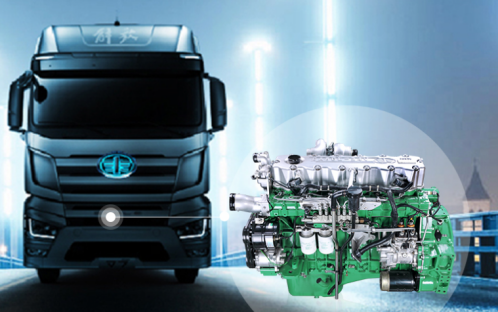May. 17, 2023

The engine accounts for approximately 30% of the total value of heavy-duty trucks, making it a core component in the industry's value chain. With the ongoing upgrade of product structures, the heavy-duty engine sector is expected to experience steady growth. As heavy-duty truck engines transition to higher displacement capacities, the engine value is projected to comprise 30%-40% of the total vehicle value, making it the most crucial component among all truck parts.
Currently, logistics heavy-duty trucks represent around 70% of annual sales and existing fleet. This percentage is anticipated to increase further in the future. In 2019, logistics heavy-duty trucks accounted for approximately 70% of the existing fleet and annual sales. The quantity of logistics heavy-duty trucks is closely related to GDP growth, while engineering logistics vehicles correlate strongly with real estate and infrastructure development rates. Considering the steady year-on-year growth of GDP in the medium to long term, it is estimated that the annual growth rate of logistics heavy-duty trucks will be between 4% and 6%. As for engineering heavy-duty trucks, which are influenced by real estate and infrastructure policies, the expected annual growth rate in the medium to long term is around 0%. Although short-term heavy-duty truck sales are impacted by industry-related policies, the medium to long-term sales are determined by the existing fleet divided by the replacement cycle (approximately 8 years). Therefore, it is predicted that both the proportion of logistics heavy-duty trucks in the existing fleet and sales will continue to increase in the medium to long term.
The trend towards higher power output is more evident in logistics heavy-duty trucks compared to engineering heavy-duty trucks, with engines above 12 liters accounting for over 20% of the former in 2019. Looking at the sales structure based on engine displacement, logistics and engineering heavy-duty trucks have similar proportions for products below 9 liters and in the 10-12 liter range. However, the proportion of engines above 12 liters differs significantly. In 2019, logistics heavy-duty trucks accounted for 33% of sales for engines below 9 liters and 36% for the 10-12 liter range, while in the segment above 12 liters, the proportions were 21% and 3% respectively. Logistics heavy-duty trucks have a higher proportion of large-displacement engines compared to engineering trucks.
Due to the development needs of the logistics industry, changes in customer structures, and increased user demands, the trend of upgrading logistics heavy-duty truck engines to higher displacement capacities is expected to continue.
From the logistics industry's perspective, the rise of high-value-added industries such as e-commerce delivery, cold chain transportation, and healthcare logistics demands higher transport efficiency. In the early stages, many Chinese heavy-duty trucks had smaller engines installed in larger bodies. To propel the vehicle, the engine had to operate at higher speeds, resulting in accelerated wear and aging, higher fuel consumption, reduced reliability, and limited effective operating time, leading to higher maintenance costs. Higher displacement engines offer greater power and torque, better meeting the efficiency requirements of the logistics industry.
As logistics companies continue to dominate the transportation sector, their pursuit of greater logistics efficiency has shifted from individual operators to centralized logistics companies. This shift has led to improved reliability, safety, and stability of transport services, while customers' affordability has also increased. Additionally, transportation service quality, including timeliness, has improved, further driving the need for higher engine power in transport vehicles.
Large-displacement engines bring higher profits and serve as a primary carrier for engine manufacturers to showcase advanced technologies. From the perspective of heavy-duty engine manufacturers, large-displacement engines command higher unit prices and gross profit margins, thus fueling their willingness to invest in research, development, production, and promotion of such engines. Consequently, there is a continuous cycle of upgrading and replacing large-displacement engines, leading the industry's trends.
In conclusion, the proportion of large-displacement engines in the heavy-duty truck industry will continue to rise due to the higher proportion of such engines in logistics vehicles, which is further expected to increase. Considering the steady growth in the share of logistics heavy-duty trucks in both fleet and sales, the overall proportion of large-displacement engines in the heavy-duty truck industry will continue to increase.
Contact us for more information: https://www.fawde.com/
Tel.: +86 510 8501 4990 ext.8356
Mob.: +86 13914166873
Fax: +86 510 8599 7974
E-mail: info_fawde@fawde.com.cn
Add.: 98# Yongle East Road, Wuxi, Jiangsu, China.